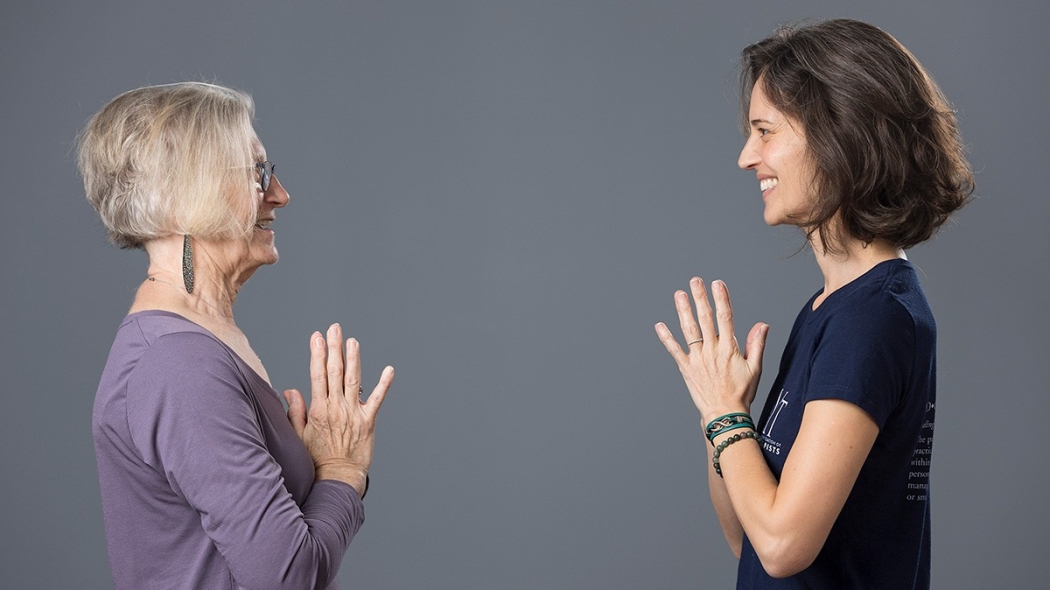If you’re looking to become a healthier, happier version of yourself in 2023, consider these out-of-the-box therapies that are good for the mind, body, and soul.
Yoga Therapy
Cary resident and certified yoga therapist Rachel Manetti knows a thing or two about pain. The mother of three has broken both feet and her shoulder in three places, experienced migraines as a child that continued into adulthood, and suffered tragic loss in her personal life.
“All these different types of pain — the migraine, the bone breaks, the grief — have exposed me to all these different levels that we have to experience as a human, and in every one of those, whether I knew it or not, I used the toolkit of yoga therapy to heal,” said Manetti.
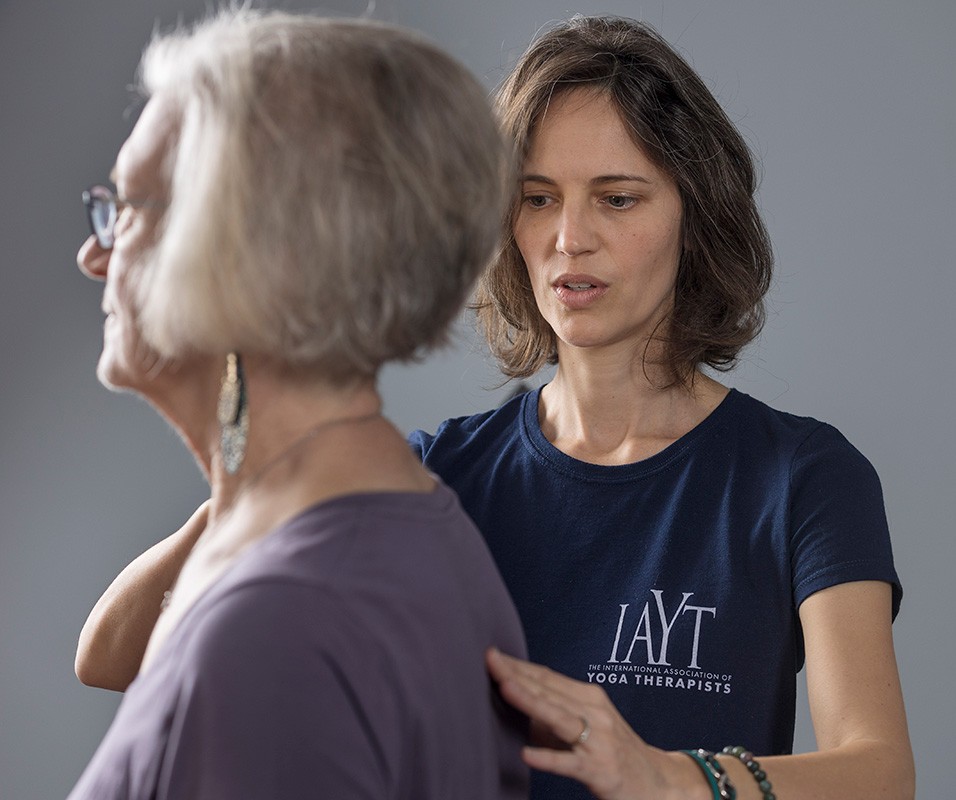
“The people that I see have experienced pain in their lives and have found their way toward more relief by way of primary providers, specialty providers, complementary providers … but they’re looking for more,” said Manetti.
Manetti’s journey into the world of yoga therapy was unexpected, to say the least. A year after being laid off from her job during her pregnancy, her friend suggested that she get trained as a yoga instructor.
Yoga Therapy Fun Facts:
- 70% of Manetti’s new clients have no prior yoga experience.
- Yoga can be small movements or no movements at all.
- Yoga therapy focuses on lifestyle choices and skillful decision-making.
- The point of meditation is to build attention, not necessarily to quiet or calm the mind.
What to Expect:
- 3-5 initial sessions, typically once a week
- A personalized whole-health. whole-body approach.
- A “yoga toolkit” to take with you and integrate into your life.
“At that point, I was staying at home and doing some contract work for my old company, and I said, ‘I think that sounds interesting,’” said Manetti. “I did a three-week base-level yoga teacher intensive, which is the minimum amount of training you need to do to teach in a studio or a gym in a mindful and safe way.”
After a few years of teaching fitness-oriented yoga, Manetti became interested in how bodies were moving (and how some bodies weren’t moving). During that time, she was introduced to the teachings of a yoga therapist based in Calgary whose focus was on helping people facing chronic pain through the tools of yoga. What followed was years of intensive training, hundreds of case studies, and many trips between Cary and Calgary — all while juggling three young kids.
“At the end of that training, you have actually set yourself up to be a bridge between this world of yoga and health care,” said Manetti. “As a certified yoga therapist, I am certified by the International Association of Yoga Therapists. I am trained in biomechanics and anatomy at a certain expected level, and then I have additional training in so many areas of yoga that aren’t addressed in depth in a studio or gym — like in-depth breathwork, mindfulness, and meditation. A huge part of my work is the philosophy and the framework of yoga, and how do I help people see their lives and their pain differently using that framework.”
The majority of Manetti’s clients experience chronic pain — which is defined as pain lasting for longer than three months — whether that pain is physical, mental, or emotional.
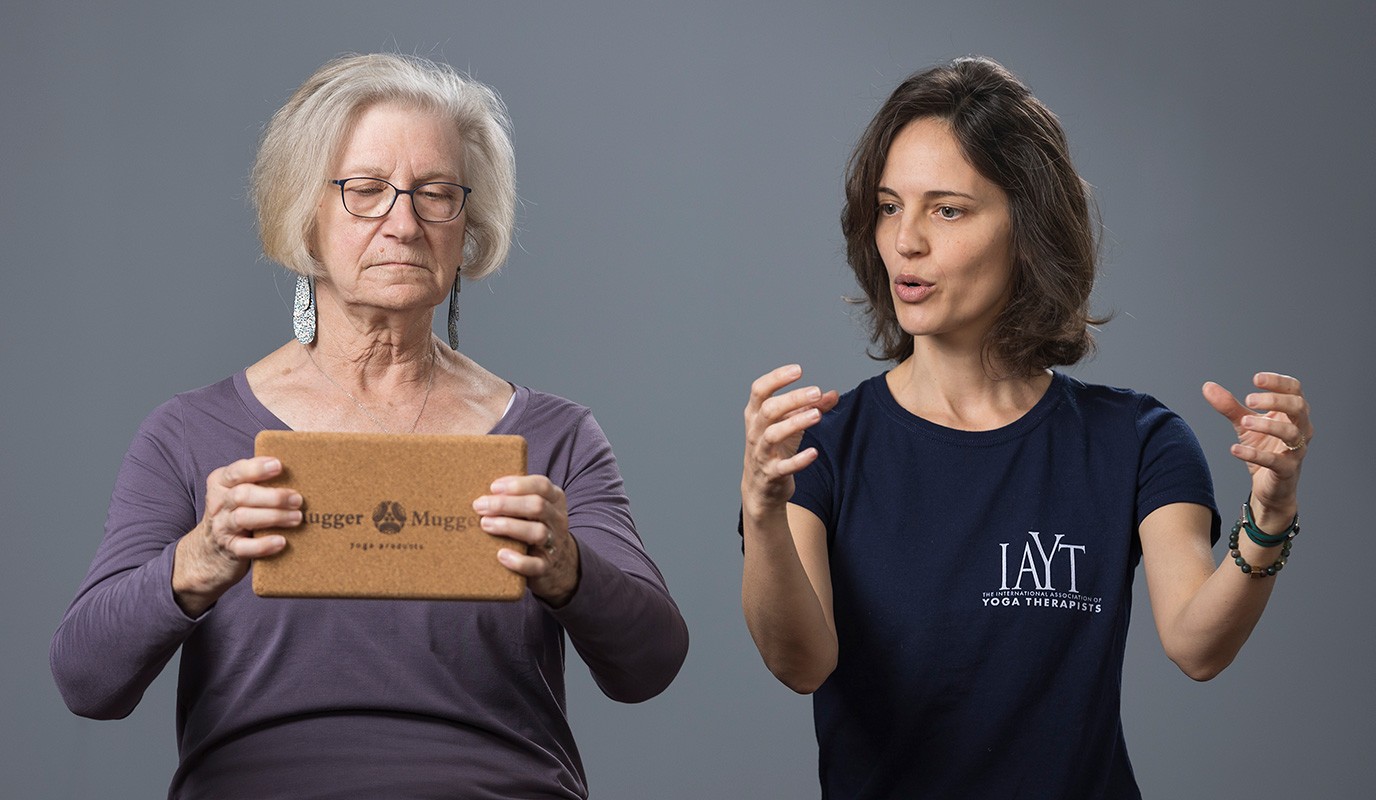
As a certified yoga therapist, Manetti has many tools in her “yoga toolkit” to help her patients. Here, Anna Ernst uses a block for “closed chain movement,” or exercise that occurs when the hand or foot is fixed and cannot move.
“I think that chronic pain is more ubiquitous than we necessarily want to give it credit for,” said Manetti. “I think that the people who come to me, many of them do have true chronic pain clinically. They have multiple providers, but they can’t quite find enough relief. They’re looking for more.”
One such client is Jerry Lyn, who reached out to Manetti via her website and set up an initial consultation due to chronic stress and pain.
“This has been an amazing and unexpected experience for me,” said Lyn. “I would say that this practice is bringing everything all together for me. It has helped me look at my whole experience — mind, body, spirit — and to look deeply and experience my body in a new way.”
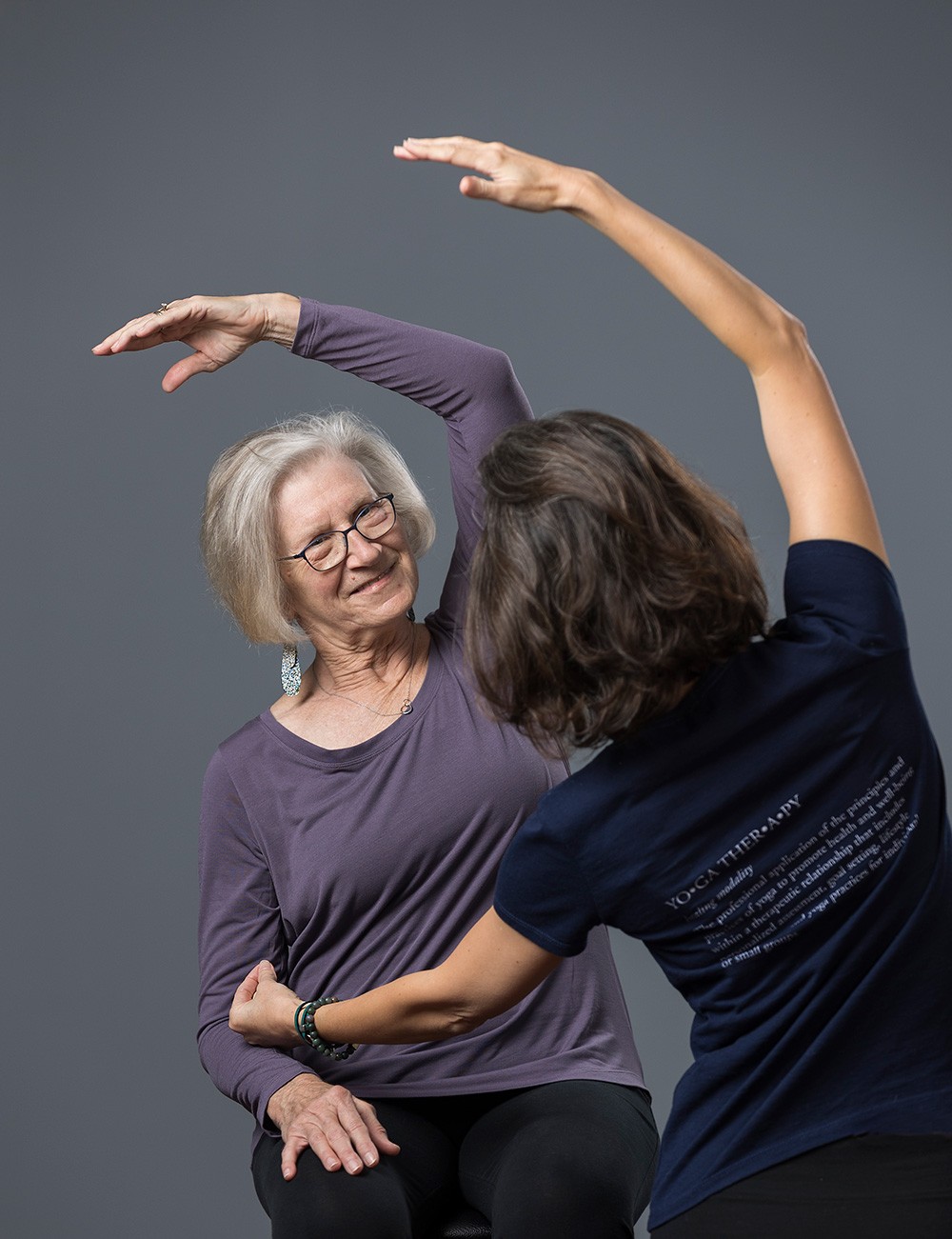
Yoga can involve small movements or no movements at all. “Yoga is not just these fancy looking poses on the front of a magazine or on Instagram,” said Manetti.
Many clients, like Chrissy (last name omitted for privacy), are referred to Manetti by other health practitioners.
“I was introduced to Rachel via my physical therapist,” said Chrissy. “I think that my yoga therapy experience has been different from many other clients, but the beauty of yoga therapy is that there are so many different ways to work with Rachel. Rachel has absolutely provided me with yoga poses and flows to work through physical pain, and the suggestions and modifications she provides are always exceptional. But where I’ve gained the most is through her support in other areas — meditation, Ayurvedic eating, intuitive movement, and really just better understanding what my body needs.”
To learn more about Rachel Manetti and Pure Resilience Yoga Therapy, visit pureresilienceyoga.com. For information on group classes or workshops, visit her blog (located on her website) and sign up for her newsletter.
Safe and Sound Protocol
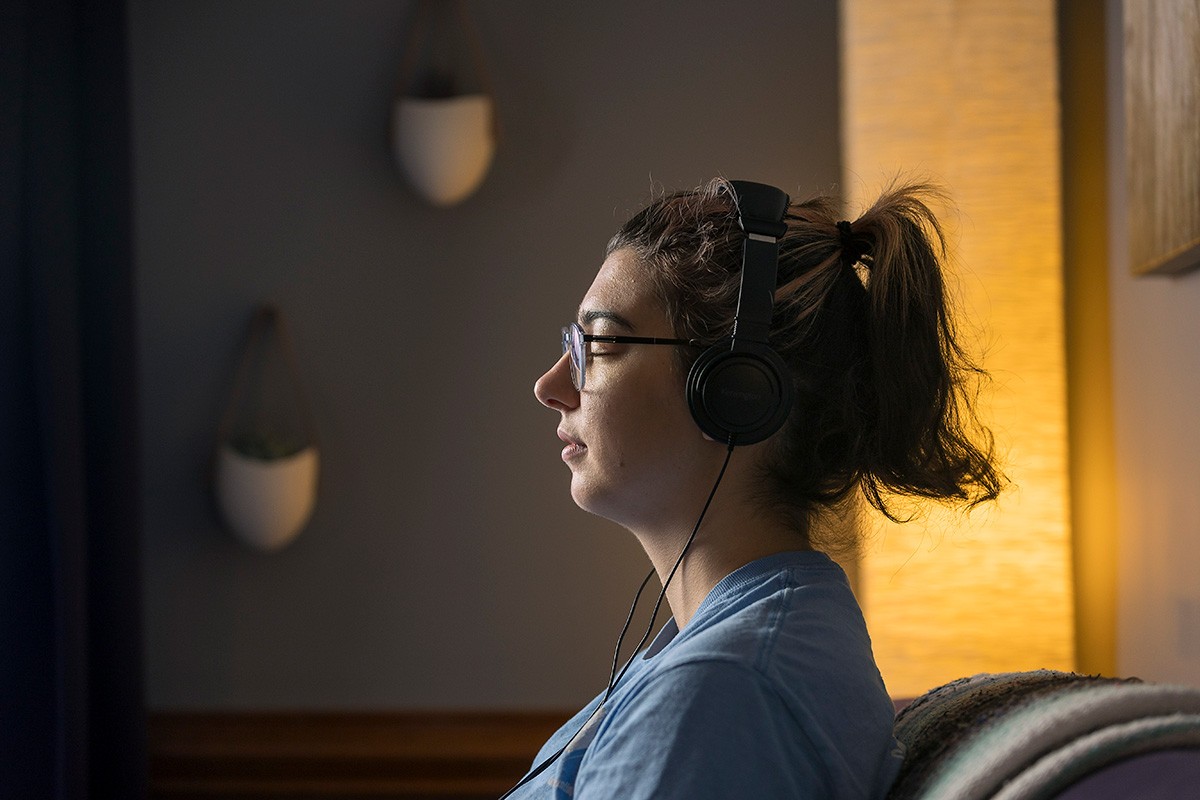
Chapel Hill resident Sarah Hoffman wears headphones used during a Safe and Sound Protocol therapy session.
Dr. Amelia Kelley, owner of Kelley Counseling & Wellness, has worked in schools, outdoor therapy camps, day treatment programs, and an outpatient methadone clinic treating addiction and mental illness. With over two decades of experience under her belt, she understands the importance of an integrated approach to health care.
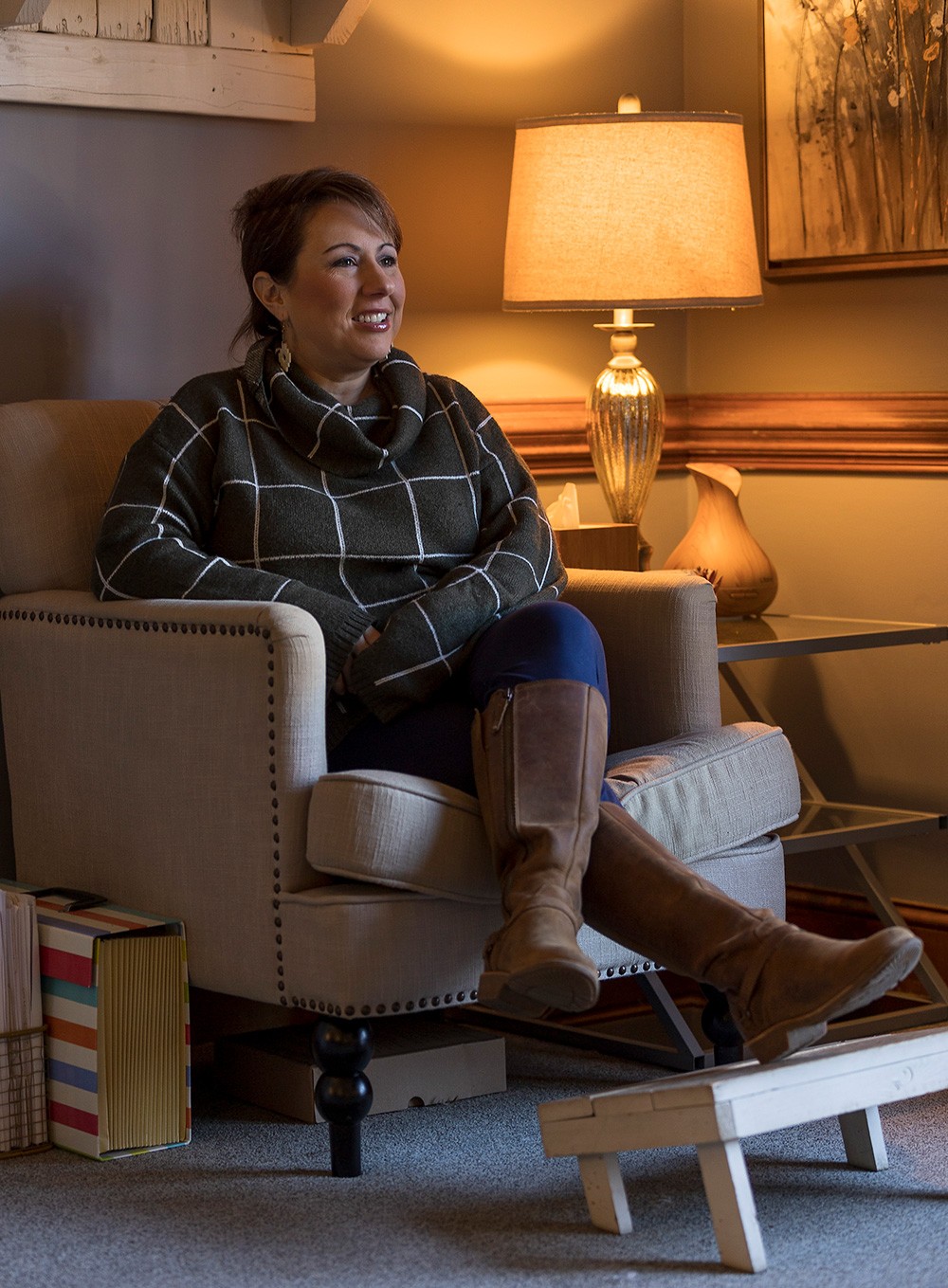
Dr. Amelia Kelley, owner of Kelley Counseling & Wellness, offers traditional “talk therapy” as well as a variety of other alternative options, including Safe and Sound Protocol and hypnotherapy.
“I realized, probably because of being an art therapist and then just growing up as a dancer, just how much the body plays a role,” said Dr. Kelley. “Eventually I started to become more interested in trauma and stumbled upon the Polyvagal Theory, which is the basis for the Safe and Sound Protocol — the listening therapy that we offer.”
“My very good friend from years and years ago was a fellow under Dr. Stephen Porges, who is the godfather of this theory. He created a measurement device that assessed whether or not the therapy was working, and lo and behold, it’s helpful for regulating your nervous system, for regulating sleep, ADHD symptoms, tinnitus, appetite, or anything that the vagus nerve is responsible for.”
Safe and Sound Protocol is a passive listening therapy, meaning that you don’t have to do anything other than receive it. As a certified provider, Dr. Kelley delivers the therapy virtually to clients over five sessions for one hour a day, five days in a row.
“It’s music that we’ve all heard, but has been altered to increase the higher pitched sounds that we tune into when we’re assessing if something is safe,” said Dr. Kelley. “A very good example would be the way that we speak to babies and young children — we kind of go into this lilt, and that is to help regulate the vagus nerve to know that everything is OK,” said Dr. Kelley.
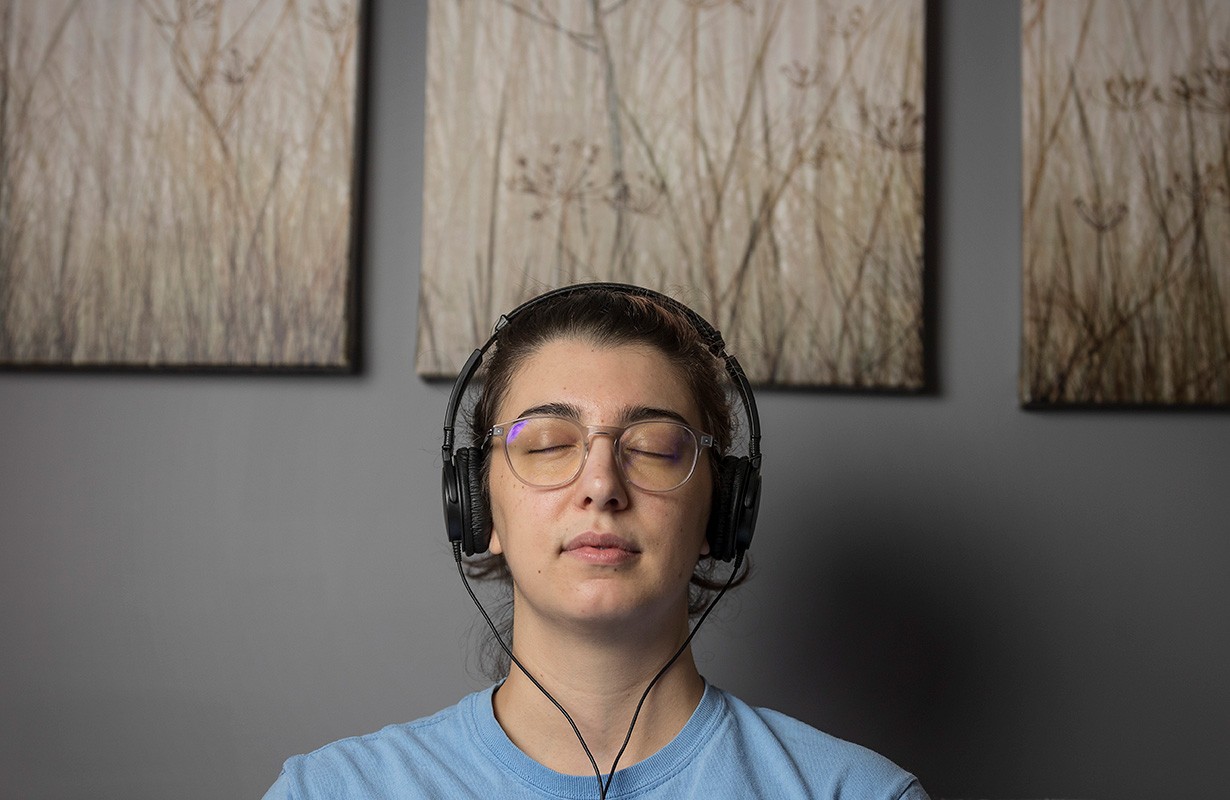
As a passive listening therapy, Safe and Sound Protocol can help with regulating sleep, ADHD symptoms, tinnitus, and much more.
“When we hear low frequencies more often, it sends danger signals to your vagus nerve. So you can think that you’re stressed or should be on high alert when that’s not necessarily the case. A sign that someone really could benefit from this is if they get very easily agitated by loud noises, crowds, or people chewing or talking too loudly. Those are all good signs that your vagus nerve is dysregulated and that this therapy will help.”
Hypnotherapy
Another out-of-the-box therapy that Dr. Kelley provides is hypnotherapy — a way to bypass the constant chatter that blocks us from being connected to our subconscious mind.
“The subconscious mind is the underlying parts that are always there, that we don’t really realize are dictating a lot of our behaviors,” said Dr. Kelley. “A good way to explain it is that your subconscious mind is actually what drives you home from work — you’re not sitting there consciously thinking that you need to take a left turn to get on I-40. So this can be really helpful for knowing how to drive home from work or remembering to brush your teeth or saying god bless you when someone sneezes, but it can also become highly problematic when that part of the brain dictates unhealthy behaviors.”
- The subconscious can “call” you to unhealthy, habitual behaviors.
- Many phobias stem from irregular blood sugar because we associate the heightened nervous system state with something we should fear.
- Hypnosis should NOT be used as treatment for chronic ongoing eating disorders or substance abuse issues.
Hypnotherapy assists with unhealthy habits by putting the patient into a relaxed state where they’re more open to suggestions and new ways of trying something. It has been used to treat anger management, obsessive compulsive disorder, pain control, panic attacks, depression, weight loss, smoking cessation, phobias, and much more.
“I did the Safe and Sound Protocol to help with driving anxiety,” said one of Dr. Kelley’s clients (name omitted for privacy). “Before doing the treatment, I felt very triggered and anxious in the car — I had been in a minor accident with my child in the car years before. It was about a month after I completed the treatment that I remember being stuck in traffic and being surprised that I felt relaxed.”
For those who are interested in hypnotherapy alone, Dr. Kelley provides a preliminary survey in lieu of a full clinical assessment. Patients should expect at least a 45-minute session, with at least 15 minutes dedicated to some psychoeducation about what they are going to experience.
“I really want people to realize that talk therapy can be creative, too, and not to be fearful or turned off by finding a really well-versed, integrative mental health therapist who has a bag of tricks in their toolbox,” said Dr. Kelley. “I think that the importance of having a stable relationship and someone who really knows you can help these alternative therapies be even more powerful.”
- Dare to Heal Differently
- Beyond Burnout
- A Class of Its Own
- Senior Profile: Anne Schick
- Things to Do: January / February 2023
- Erica Chats: Is 2023 the Year You Start to Live Your Authentic Life?
- On Trend: Drinking Vinegars
- Small Business Spotlight: Spa By Jing
- Nonprofit Spotlight: Small Hands Big Hearts United
- Restaurant Profile: BB’s Crispy Chicken
- Liquid Assets: The Stipe
- Garden Adventurer: Agalonema Aglow



